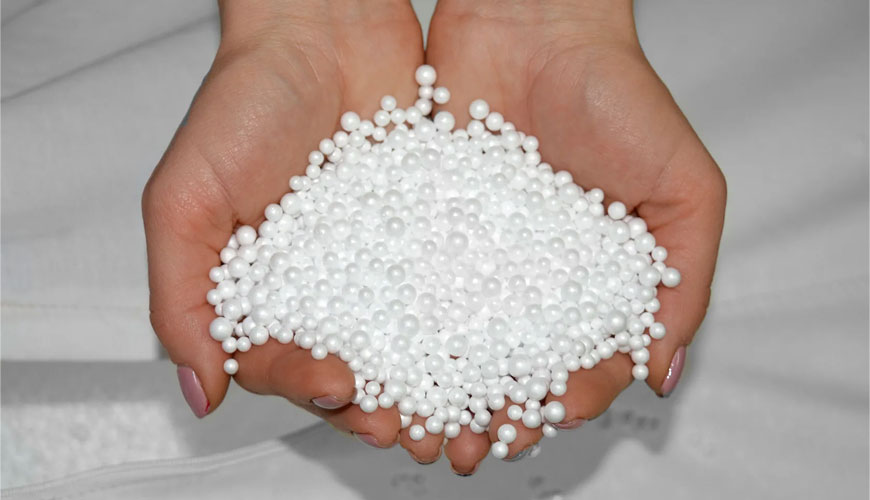

This part of the EN ISO 3386 standard developed by the International Standards Organization (ISO) covers material determination up to 250 kg/m3 density. It also specifies a method for calculating the compression stress value of such materials. The compressive stress/strain characteristic is a measure of the material's load-bearing properties. Two formulas allow the results to be calculated.

Compressive stress/strain property is a measure of the material's load-bearing properties, though not necessarily its capacity to carry a long-term load.
The compressive stress/strain characteristic differs from the thickness and tensile properties of the flexible cellular material under test, indentation stiffness properties known to be affected by the shape of the compression plate, and the shape and size of the test piece.
The testing machine shall be capable of clamping the test piece between a support surface and a clamping plate with a uniform relative velocity of movement in the vertical direction of 100 ± 20 mm/min.
The testing machine must be able to measure the force required to produce the specified compression with an accuracy of ± 2% and the test piece thickness with an accuracy of ± 0,2 mm under load. Autographic recording of stress-strain values is preferred.
Support surface Unless otherwise specified, the test piece shall be supported on a smooth, flat, horizontal and hard surface that is larger than the test piece, approximately 6 mm in diameter and ventilable with holes approximately 20 mm apart. air outlet from the bottom of the test piece.
The clamping plate shall be of any suitable size and shape, provided it overlaps the test piece in all directions. The sub-surface will be flat and smooth, but not polished and protected parallel to the support surface.
EN ISO 3386-1 Test Procedure
Position the test piece so that the force acts along the centerline of the testing machine and compress it via the compression plate at 70 ± 50 m/min to a compression of 100% +20% of the initial test piece thickness. until the compression stress applied is equal to that specified in the material specification. Then depressurize the test piece at the same rate until the distance between the clamping plate and the base plate is equal to the initial test piece thickness.
Immediately repeat this procedure three times and read the force at strain specified in the fourth compression cycle in Newtons.
Among the services provided by our organization within the framework of material testing services, there are also EN ISO 3386-1 standard tests. Do not hesitate to contact EUROLAB laboratory for your test and certification requests.
To get an appointment, to get more detailed information or to request an evaluation, you can ask us to fill in our form and reach you.